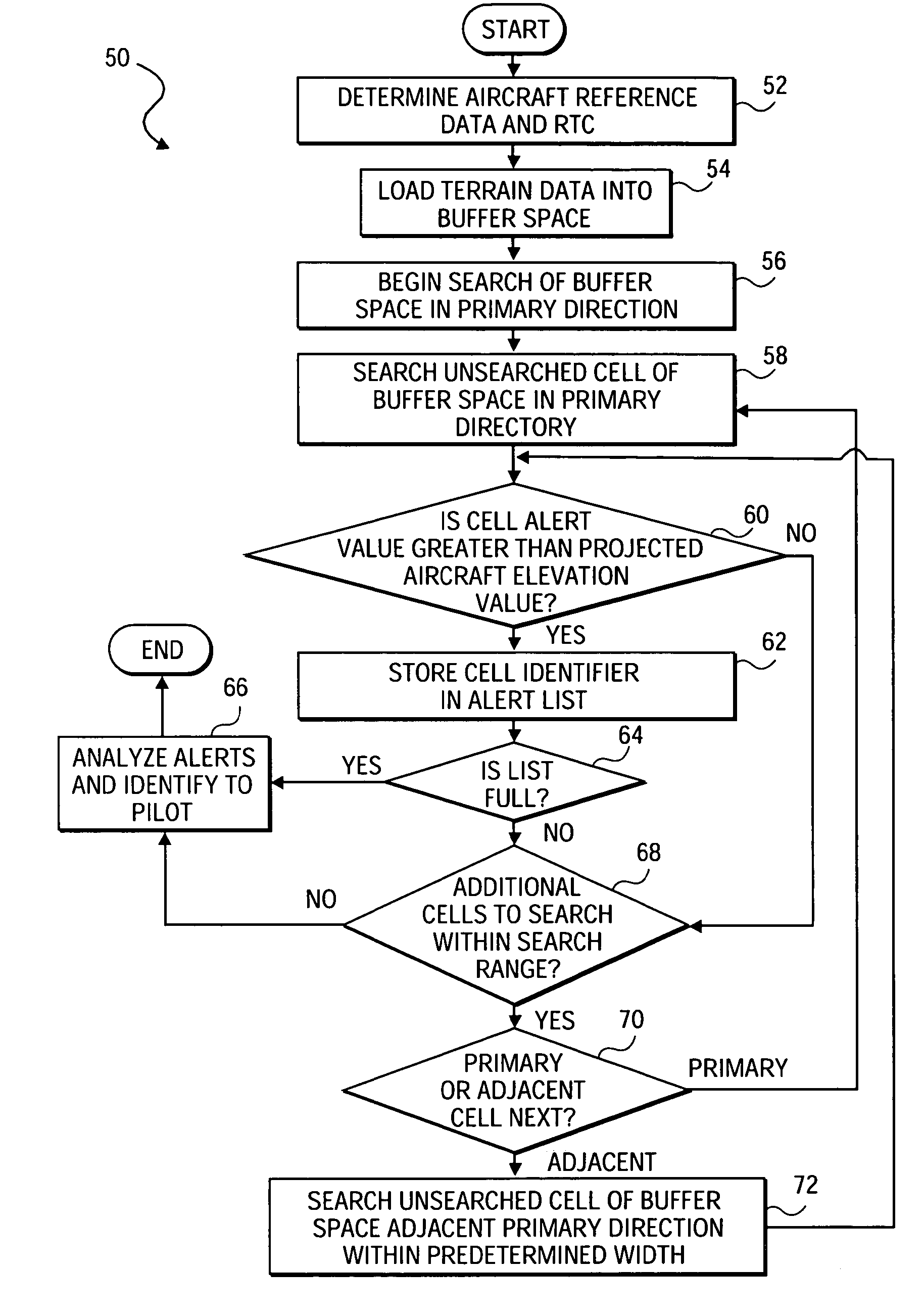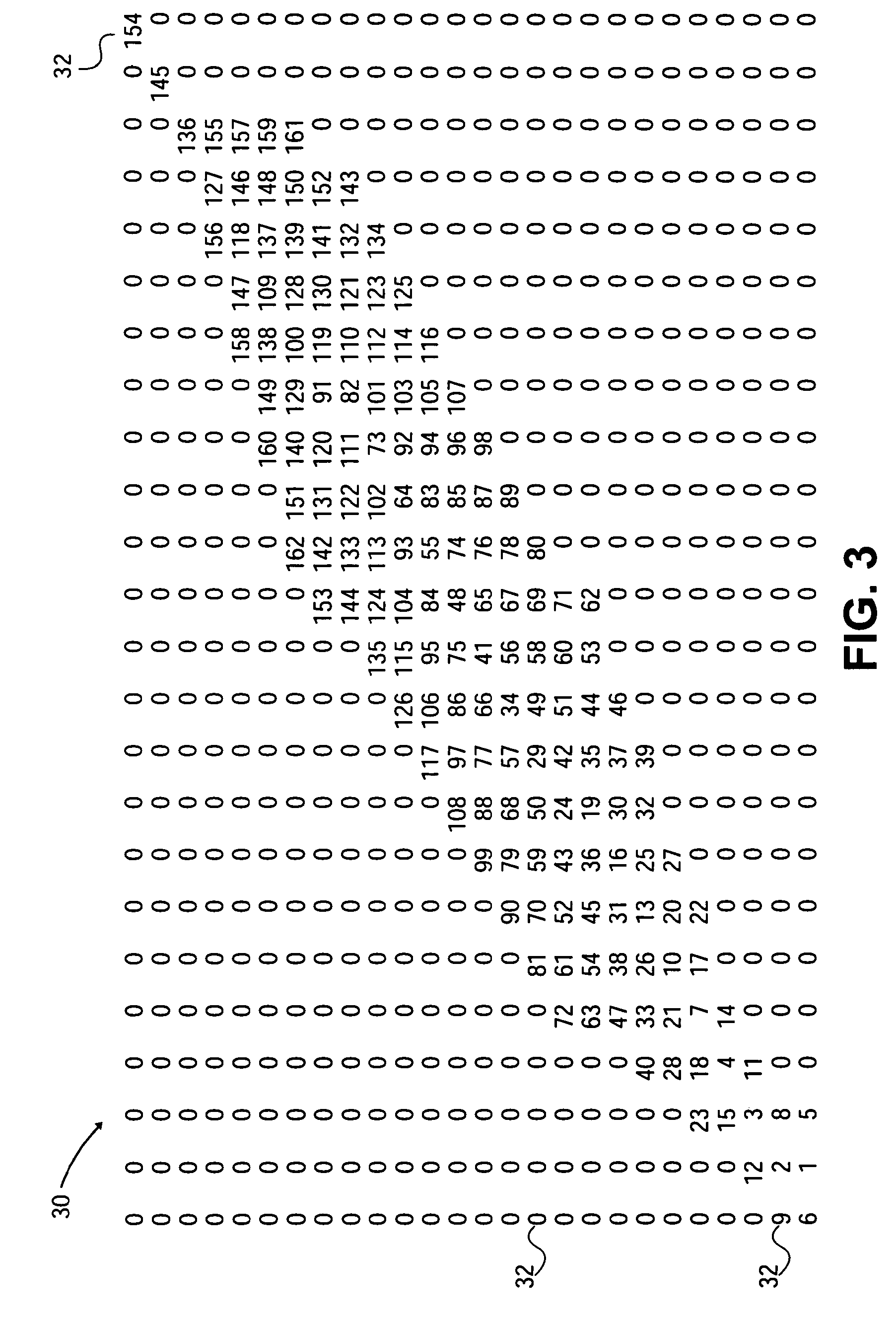System, method and apparatus for searching geographic area using prioritized spatial order
a geographic area and priority technology, applied in the field of search data, can solve the problems of complex and expensive, insufficient processing and memory resources, and inability to search the search area and find the cells in violation, so as to reduce the processing and computation requirements, further processing and calculation savings, and reduce the effect of computation requirements
- Summary
- Abstract
- Description
- Claims
- Application Information
AI Technical Summary
Benefits of technology
Problems solved by technology
Method used
Image
Examples
first embodiment
[0028]Referring to FIGS. 1 and 2, a method of searching spatial data in a prioritized manner is shown. The method is useful for searching spatial data from a database including at least one value stored in association with each of a plurality of information records associated with a spatial region. A reference vector 20 within the spatial region 22 is determined (Step 2), and spatial data from a spatial database is accessed which corresponds to a starting point of the search. Spatial data corresponding to the determined spatial region 22 is loaded from the database to a spatial memory buffer based upon the starting reference position and primary search direction of the reference vector 20 (Step 4). By loading a smaller region of relevant data from the spatial information database into a separate memory buffer, the smaller relevant data region may be searched more quickly. In the invention, the smaller region of relevant data is stored in the memory buffer according to its orientatio...
second embodiment
[0054]the further analysis for each cell in the alert list involves a comparison of Ttravel with only one time value as explained below:
[0055]If Ttravelpuw+Trw, a Warning alert is issued for the cell because the time required for the pilot to pull-up to clear the terrain obstacle without additional measures plus the reaction time is greater than the time to travel to the region represented by the cell. If no action is taken, the danger of terrain impact is imminent.
[0056]In this second embodiment of the analysis, some of the cells may be marked as Warning alerts and the remainder of the alert cells will be marked as Caution alerts. Because each of the cells in the alert list were previously indicated as those cells in which the projected altitude of the aircraft is below the clearance elevation boundary, each of the alert cells are marked with an alert. The second embodiment of the analysis, in contrast to the first embodiment, will result in more Caution alerts being issued, but al...
PUM
 Login to View More
Login to View More Abstract
Description
Claims
Application Information
 Login to View More
Login to View More - R&D
- Intellectual Property
- Life Sciences
- Materials
- Tech Scout
- Unparalleled Data Quality
- Higher Quality Content
- 60% Fewer Hallucinations
Browse by: Latest US Patents, China's latest patents, Technical Efficacy Thesaurus, Application Domain, Technology Topic, Popular Technical Reports.
© 2025 PatSnap. All rights reserved.Legal|Privacy policy|Modern Slavery Act Transparency Statement|Sitemap|About US| Contact US: help@patsnap.com



